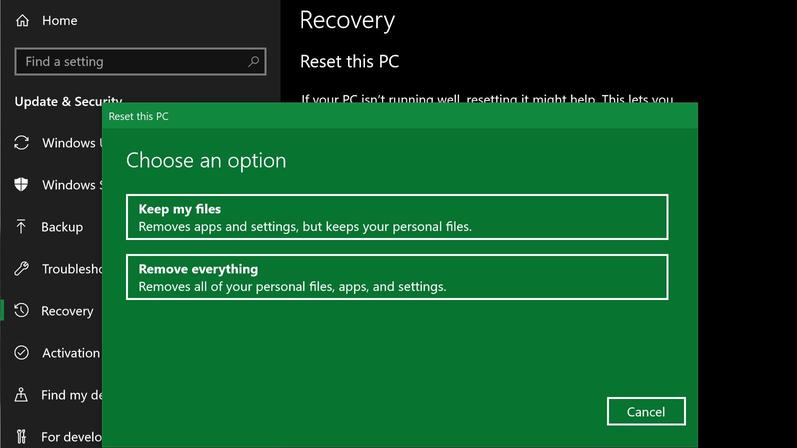Windows 10 basics: how to reset your system
Windows 10 is, on the whole, more trouble-free than its previous iterations — but sometimes, things just go wrong. A couple of years ago, I made the mistake of not checking to make sure my laptop was securely plugged in while Windows was undergoing a major update. The battery ran out in the middle of the update and voila! I was stuck with what I was sure was now a very expensive brick. I was reminded of this just the other day, when another Windows 10 system decided that it didn’t like the latest update and began misbehaving very badly — so badly, that it would stop reacting to the cursor one minute after it booted.
In both cases, I was able to save an otherwise unusable PC by doing a reset, which removes all (or most) of the files and apps on the hard drive and reinstalls Windows 10.
(By the way, you have backed up your computer, right?)
Resets are also useful if you’ve just bought a spanking new system, have loaded all your data onto it, and now want to sell / trade in / give away / discard your old Windows 10 system. But before you get the no-longer-needed computer out of your house, you’re going to want to wipe all your data off the hard drive first.
There are several ways to initiate a reset in Windows 10, depending on what you need to do.You can do it from the Windows interface or, if you’re in trouble, from the more basic Safe Mode. There is also a different method of reinstalling Windows called “Fresh start” (formerly “Refresh”). Ready? Here we go.
Reset in Windows 10
If Windows 10 is working — or even if it’s mostly working — it’s simple to do a reset.

Reset in Safe Mode
Sometimes Windows is so screwed up that you can’t get to the reset feature. In that case, the next thing to try is to reset in Safe Mode.
If you’ve been around Windows systems for a while, you might associate Safe Mode with an easy-to-access way to reboot your machine without loading all the apps and functions that may be causing problems. In Windows 10, Safe Mode isn’t as simple to boot, especially if you’re having serious problems — but it could still save your bacon if you can’t get to the normal Reset window.
There are a variety of ways the Windows 10 variety of Safe Mode can be helpful. For example, it can return you to a previous version of Windows. It can perform a system restore(assuming that you’ve had the foresight to enable the Restore feature, which saves a version of Windows in case of emergencies). And it can help you reset your system.
Microsoft’s support site lists three ways to get to Safe Mode: from your settings, from your sign-in screen, and from a blank screen.
If your PC is crapping out after you pass the sign-in screen, then you can try to access the Safe Mode from that same sign-in screen. These are the instructions on the Microsoft site; it didn’t work for me in three tries, but you could give it a shot:
This is the most difficult way to access the Safe Mode — but it’s what you want to try if your PC is simply not booting Windows. This is what finally worked for me; however, it took several tries and not a little cursing, so prepare to be patient.
Again, I had to attempt this several times before it worked, and even now, I’m not sure what I did right the last time. But if your PC is simply not booting up and you want to try to reset it, it’s worth a try.
Fresh start
Back before Windows 10, there was a clear difference between resetting and refreshing your Windows PC: the former deleted all your files, settings, and apps, while the latter allowed you to keep personal files and settings. Now, the difference is a little more subtle. A reset can allow you to keep your personal files but will wipe your personal settings. Fresh start will let you keep some of your personal settings but will remove most of your apps.
If you think a fresh start works better for you, here’s where you find it:








